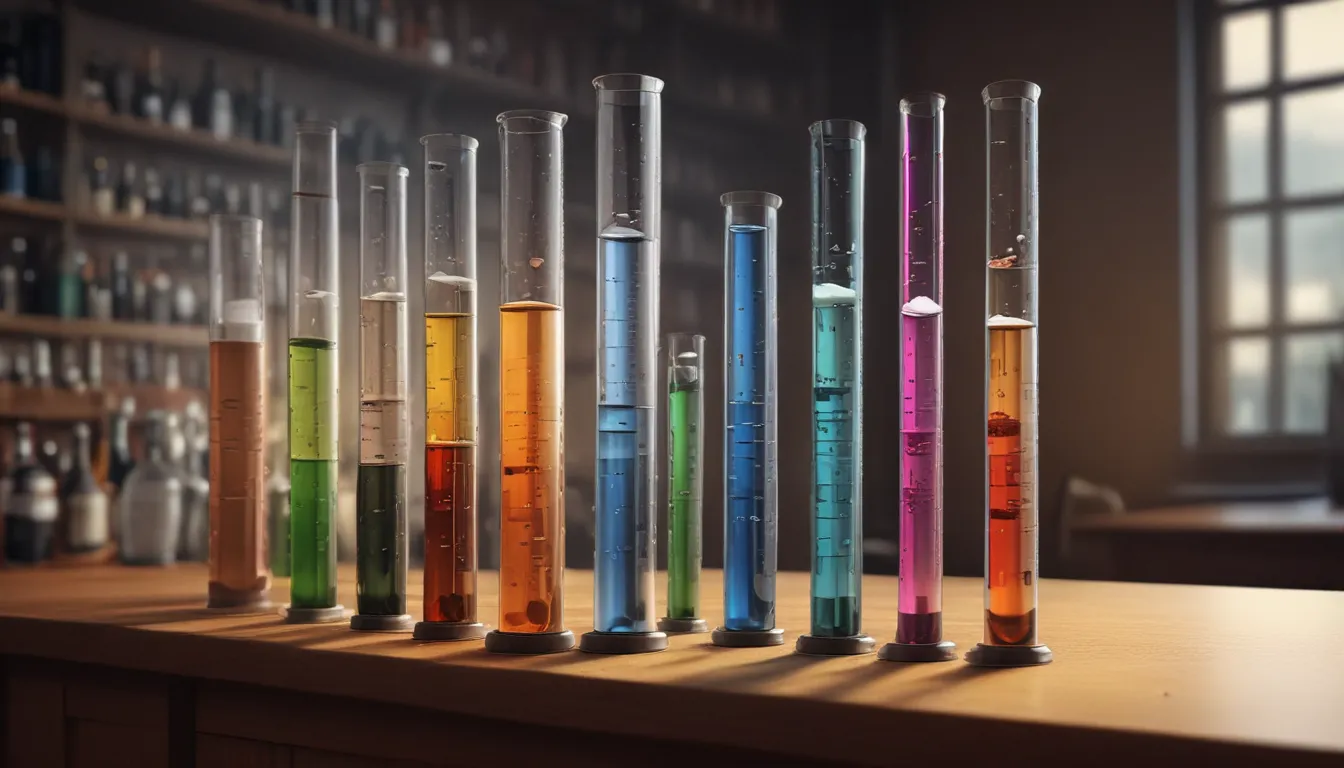A Note About Images: The images used in our articles are for illustration purposes only and may not exactly match the content. They are meant to engage readers, but the text should be relied upon for accurate information.
In the world of scientific experimentation and measurement, graduated cylinders stand as unsung heroes of precision. These slender, cylindrical tools are fundamental to accurately measuring liquid volumes in laboratories across various scientific disciplines. Whether you’re a seasoned researcher or a curious student, understanding the ins and outs of graduated cylinders is crucial for conducting accurate experiments and analyses.
Let’s embark on an enlightening journey through 18 fascinating facts about graduated cylinders. We’ll explore their design, applications, and significance in scientific pursuits, unraveling the wealth of knowledge these seemingly simple instruments offer. By the end of this article, you’ll gain a newfound appreciation for these indispensable tools and their role in advancing scientific knowledge.
1. The Basics of Graduated Cylinders
Graduated cylinders are ubiquitous laboratory equipment used for precise liquid volume measurements. They feature a slender, cylindrical shape with carefully etched markings along the side. These markings, or graduations, allow for accurate measurement and observation of liquid levels.
2. Size Variety
Graduated cylinders come in a wide range of sizes to accommodate different measurement needs. They typically range from 10 milliliters to several liters in capacity, making them versatile for various experimental requirements.
3. Material Matters
While traditionally made of glass, graduated cylinders are now also available in plastic. Each material has its advantages:
- Glass cylinders: Known for their durability and resistance to chemical reactions
- Plastic cylinders: Lightweight, more resistant to breakage, and increasingly popular in educational settings
4. The Importance of Graduations

The graduations on a cylinder are crucial for its functionality. These markings denote specific volume measurements, typically in milliliters. Many graduated cylinders include markings for tenths of a milliliter, allowing for highly precise measurements.
5. The Meniscus Mystery
When liquid is added to a graduated cylinder, it forms a curved surface known as the meniscus. This phenomenon occurs due to the cohesive and adhesive properties of the liquid. For accurate volume readings, it’s essential to read from the bottom of the meniscus.
6. Versatility in Scientific Experiments
Graduated cylinders play a vital role in various scientific experiments across multiple disciplines. They’re used for:
- Measuring precise liquid volumes
- Preparing solutions
- Conducting chemical reactions
7. Calibration is Key
The accuracy of a graduated cylinder depends on its calibration. Properly calibrated cylinders ensure consistent and reliable volume measurements, which are critical for scientific analyses and experiments.
8. Eye-Level Readings for Precision
To minimize parallax errors and obtain accurate measurements, it’s crucial to read the volume at eye level. This practice ensures proper alignment between the liquid meniscus and the graduated markings.
9. Titration Assistance
In titration experiments, graduated cylinders are invaluable for measuring exact volumes of reactants. This precision is essential for conducting accurate and controlled chemical reactions in analytical chemistry.
10. Maintenance and Cleaning
Proper cleaning and handling practices are vital for maintaining the accuracy of graduated cylinders. Contaminants can affect measurement precision, so regular cleaning is essential.
11. Splash Prevention Design
The narrow and tall structure of graduated cylinders serves a practical purpose beyond aesthetics. This design minimizes splashing during liquid pouring, enhancing accuracy and reducing the risk of spills.
12. Density Determination
By combining liquid volume measurements from graduated cylinders with corresponding mass measurements, scientists can calculate the density of substances. This application is fundamental in physics and chemistry.
13. Educational Importance
Graduated cylinders are staples in science education, helping students develop essential laboratory skills and understand the importance of precise measurements in scientific experiments.
14. Medical and Pharmaceutical Applications
Beyond research laboratories, graduated cylinders find extensive use in medical labs for tasks such as:
- Preparing solutions
- Conducting diagnostic tests
- Measuring medication volumes
15. Industrial Uses
Graduated cylinders are not confined to scientific laboratories. They play crucial roles in various industries, contributing to:
- Quality control processes
- Manufacturing operations
- Product development
16. Environmental Science Applications
In environmental science, graduated cylinders are essential tools for:
- Water quality testing
- Environmental monitoring
- Pollution analysis
These applications are crucial for environmental conservation efforts.
17. Digital Advancements
With technological progress, digital graduated cylinders have emerged. These modern versions offer enhanced precision and accuracy in liquid volume measurements through innovative features and automation.
18. Indispensable Scientific Tools
Graduated cylinders, with their precise volume measurements and wide-ranging applications, remain indispensable allies in the pursuit of scientific knowledge and progress. Their role in research, education, and industrial processes underscores their enduring value in the scientific community.
Conclusion
Graduated cylinders embody the essence of scientific precision and inquiry. From their meticulous calibration to their diverse applications, these seemingly simple tools play a crucial role in advancing scientific knowledge. By understanding these 18 fascinating facts about graduated cylinders, we gain a deeper appreciation for the intricacies of scientific measurement and the tools that make it possible.
Whether you’re a student embarking on your scientific journey or a seasoned researcher pushing the boundaries of knowledge, the humble graduated cylinder remains a steadfast companion in your quest for precision and understanding.
FAQ: Demystifying Graduated Cylinders
Q: What are the different types of graduated cylinders available?
A: Graduated cylinders come in various forms, including tall and short variants. Plastic alternatives are also available, known for their durability and affordability, making them ideal for educational settings.
Q: Why is it crucial to maintain eye-level readings when using a graduated cylinder?
A: Eye-level readings are essential to mitigate parallax errors. This practice ensures precise alignment between the liquid meniscus and graduated markings, thereby enhancing the accuracy and reliability of experimental results.
By delving into the world of graduated cylinders, we’ve uncovered the wealth of knowledge and precision these instruments offer. From their design intricacies to their wide-ranging applications, graduated cylinders continue to play a pivotal role in scientific advancement, underscoring their enduring importance in the laboratory and beyond.






